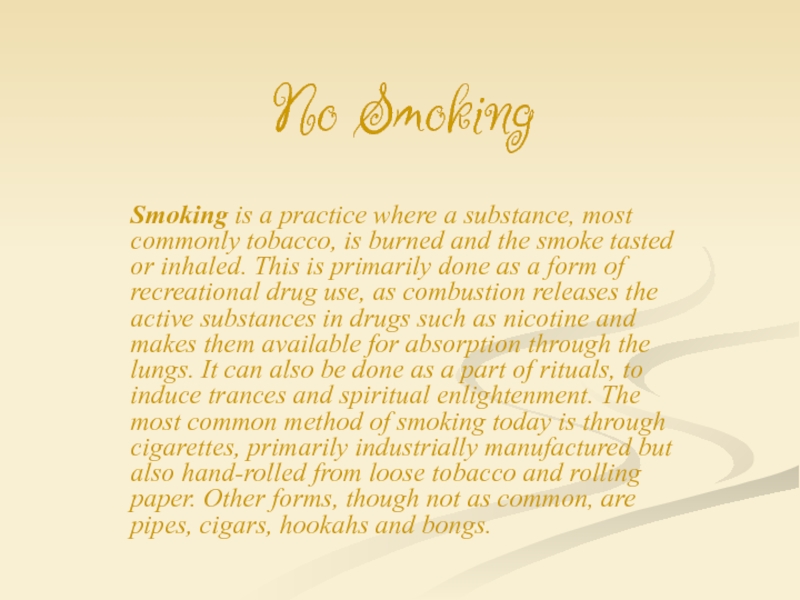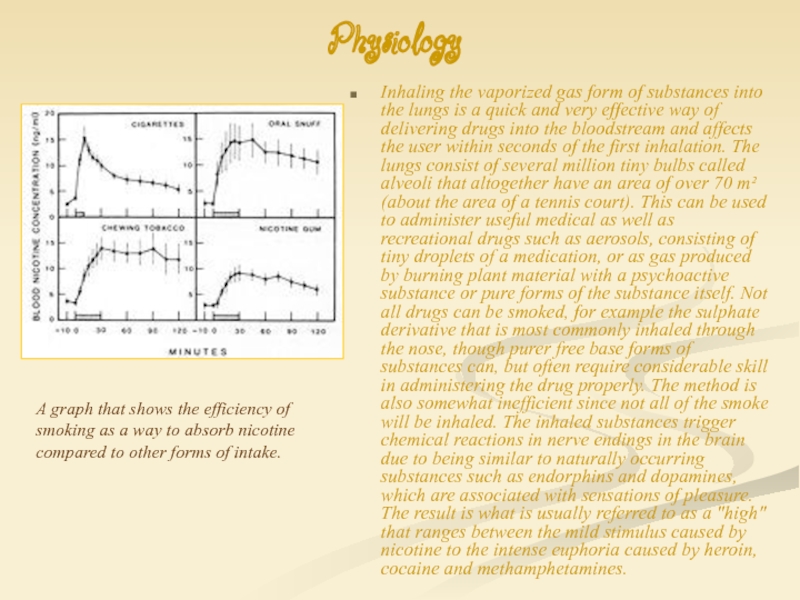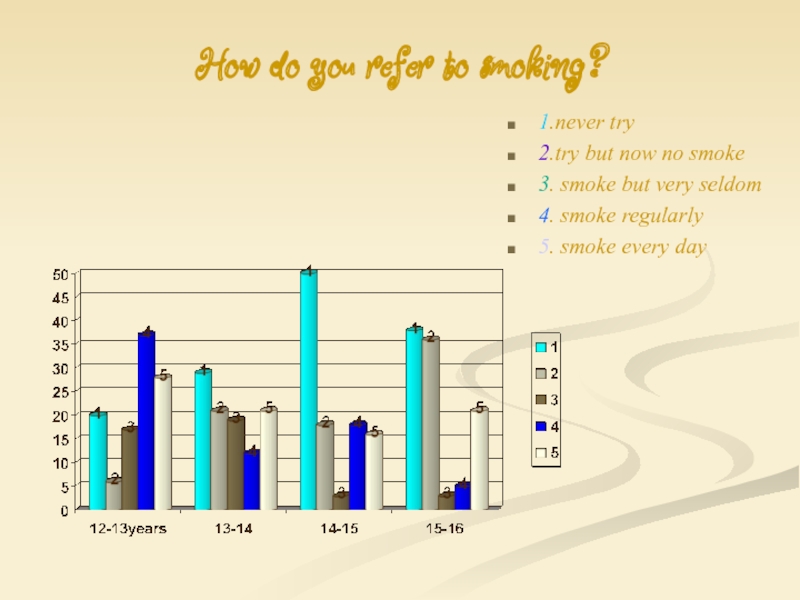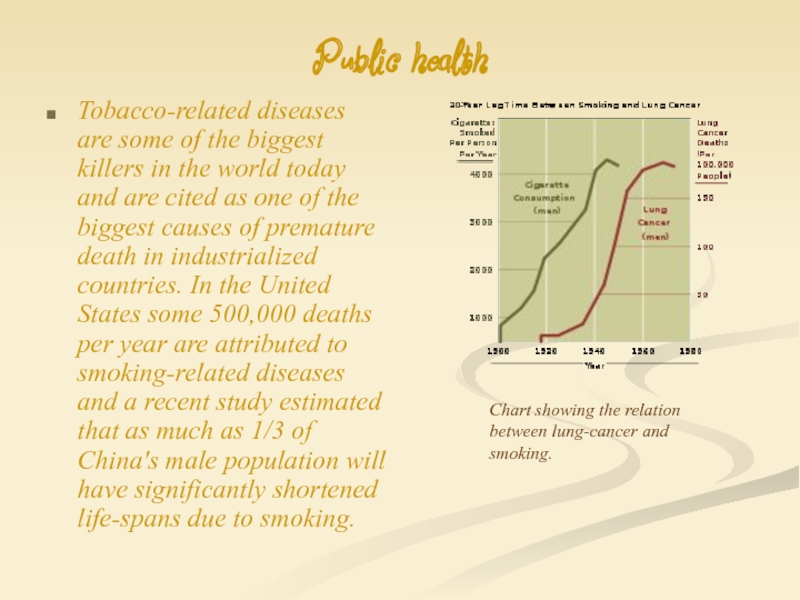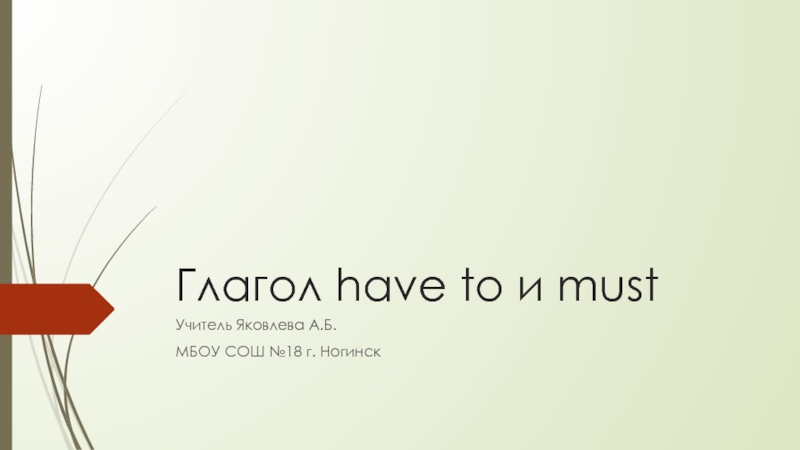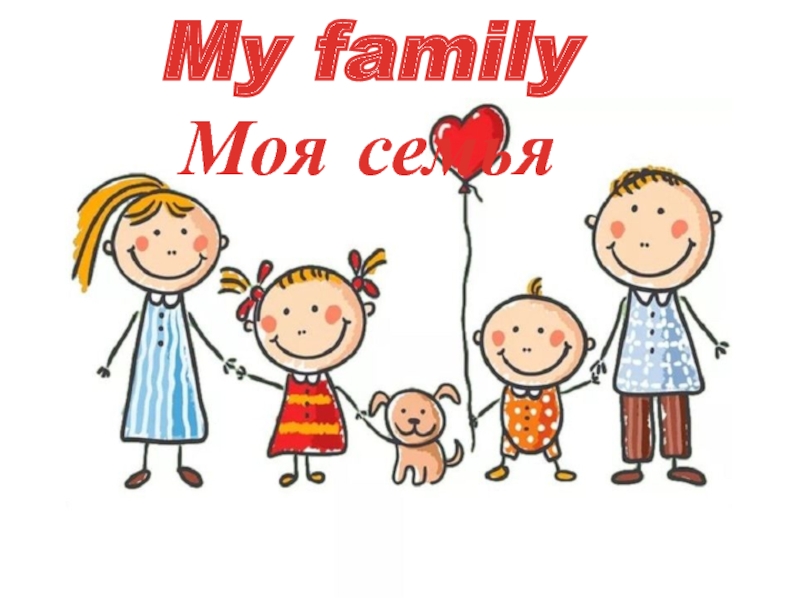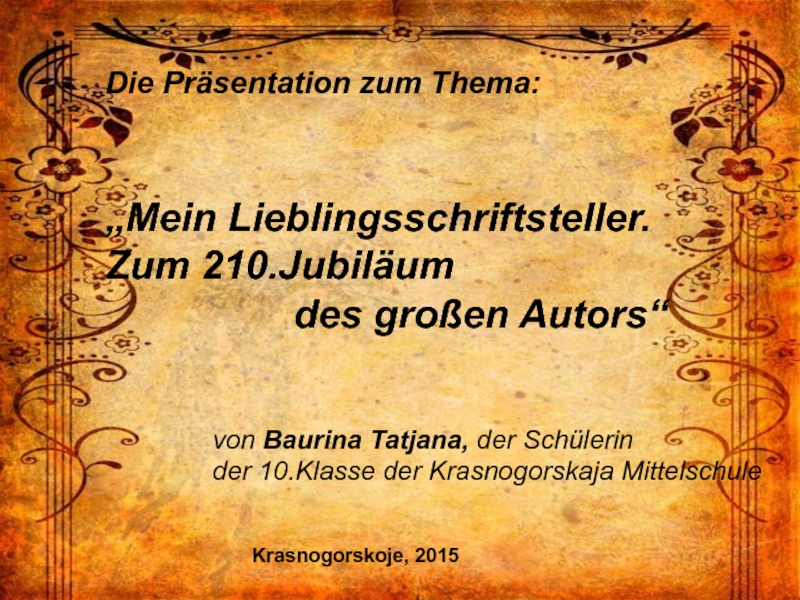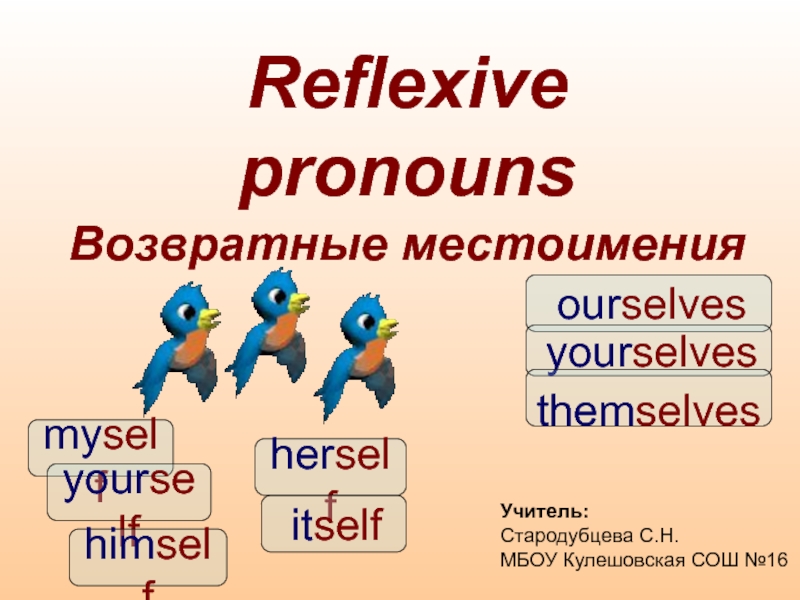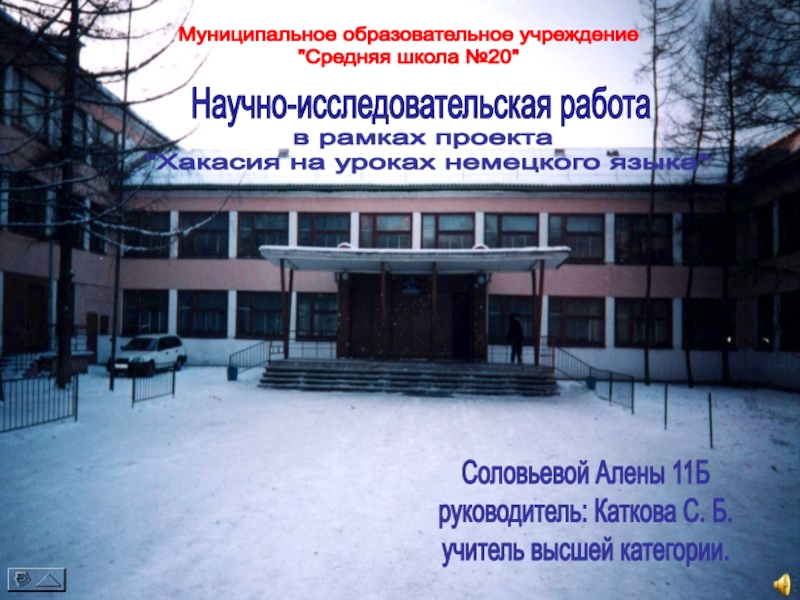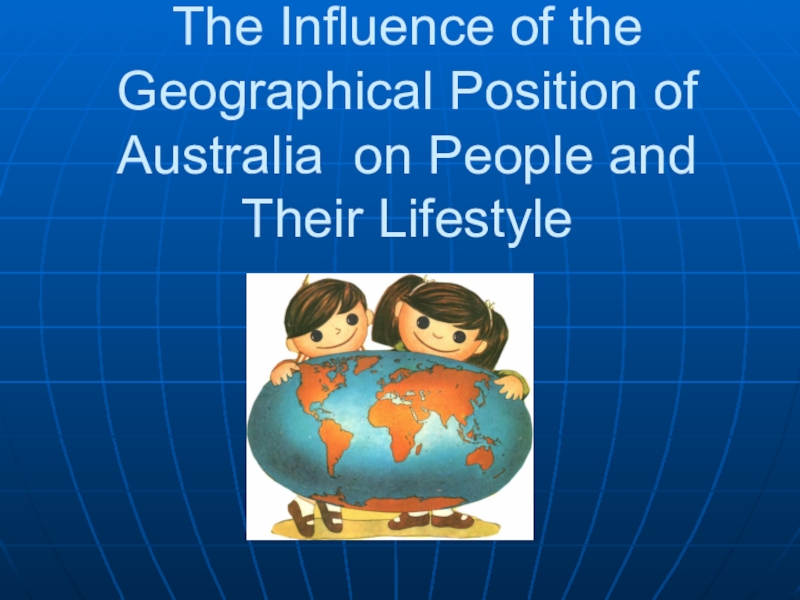Разделы презентаций
- Разное
- Английский язык
- Астрономия
- Алгебра
- Биология
- География
- Геометрия
- Детские презентации
- Информатика
- История
- Литература
- Математика
- Медицина
- Менеджмент
- Музыка
- МХК
- Немецкий язык
- ОБЖ
- Обществознание
- Окружающий мир
- Педагогика
- Русский язык
- Технология
- Физика
- Философия
- Химия
- Шаблоны, картинки для презентаций
- Экология
- Экономика
- Юриспруденция
Проект "No smoking"
Содержание
- 1. Проект "No smoking"
- 2. An industrially manufactured cigarette burning in an
- 3. Aztec women are
- 4. The tobacco revolution After the European exploration
- 5. Europe A Frenchman named Jean Nicot (from
- 6. Physiology Inhaling the vaporized gas form of
- 7. How do you refer to smoking?1.never try2.try
- 8. Social effects and demographics Smoking, primarily of
- 9. Public health Tobacco-related diseases are some of
- 10. Smoking in culture Smoking has been accepted
- 11. Скачать презентанцию
Слайды и текст этой презентации
Слайд 2An industrially manufactured cigarette burning in an ashtray; the most
common form of smoking today.
Smoking is one of the
most common forms of recreational drug use. Tobacco smoking is today by far the most popular form of smoking and is practiced by over one billion people in the majority of all human societies. Less common drugs for smoking include cannabis and opium. Most drugs that are smoked are considered to be addictive. Some of the substances are classified as hard narcotics, like heroin and crack cocaine, but the use of these is very limited as they are often not commercially available. Слайд 3 Aztec women are handed flowers and smoking tubes before
eating at a banquet, Florentine Codex, 16th century. A carving
from the temple at Palenque, Mexico, depicting a Mayan priest using a smoking tube.Smoking has been practiced in one form or another since ancient times. Tobacco and various hallucinogenic drugs were smoked all over the Americas as early as 5000 BC in shamanistic rituals and originated in the Peruvian and Ecuadorian Andes. Many ancient civilizations, such as the Babylonians, Indians and Chinese, burnt incense as a part of religious rituals, as did the Israelites and the later Catholic and Orthodo Christian churches. In Ancient Greece, smoke was used as healing practice and the Oracle of Delphi made prophecies while intoxicated by inhaling natural gases from a natural bore hole. The Greek historian Herodotos also wrote that the Scythians used cannabis for ritual purposes and, to some degree, pleasure. He describes how Scythians burned hemp seed:
“At once it begins to smoke, giving off a vapour unsurpassed by any vapour-bath one could find in Greece. The Scythians enjoy it so much that they howl with pleasure.
Слайд 4The tobacco revolution
After the European exploration and subsequent colonization
of the Americas in the 16th century, the smoking, cultivation
and trading of tobacco quickly spread to all corners of the globe. By the mid-17th century every major civilization had been introduced to tobacco smoking and in many cases had already assimilated it into the native culture, despite the attempts of many rulers to stamp the practice out with harsh penalties or fines. Tobacco, both product and plant, followed the major trade routes to major ports and markets, and then on into the hinterlands. The English language term 'smoking' was coined in the late 17th century; until then it was referred to as 'drinking smoke'An engraving from Jakob Balde's Die truckene Trunkenheit ("The Dry Drunkenness") from 1658.
Слайд 5Europe
A Frenchman named Jean Nicot (from whose name the
word nicotine is derived) introduced tobacco to France in 1560.
From France tobacco spread to England. The first report of a smoking Englishman is of a sailor in Bristol in 1556, seen "emitting smoke from his nostrils" Like tea, coffee and opium, tobacco was just one of many intoxicants that was originally used as a form of medicine.Early modern European medical science was still to a great extent based on humorism, the idea that everything had a specific humoral nature that varied between hot and cold, dry and moist. Tobacco was often seen as something that was beneficially in its heating and drying properties and was assigned an endless list of beneficial properties. The concept of ingesting substances in the form of smoke was also entirely new and was met with both astonishment and great skepticism by Europeans. The debate raged among priests, scientists and laymen whether tobacco was a bane or boon and both sides had powerful supporters.Gentlemen Smoking and Playing Backgammon in an Interior by Dirck Hals, 1627.
Слайд 6Physiology
Inhaling the vaporized gas form of substances into the
lungs is a quick and very effective way of delivering
drugs into the bloodstream and affects the user within seconds of the first inhalation. The lungs consist of several million tiny bulbs called alveoli that altogether have an area of over 70 m² (about the area of a tennis court). This can be used to administer useful medical as well as recreational drugs such as aerosols, consisting of tiny droplets of a medication, or as gas produced by burning plant material with a psychoactive substance or pure forms of the substance itself. Not all drugs can be smoked, for example the sulphate derivative that is most commonly inhaled through the nose, though purer free base forms of substances can, but often require considerable skill in administering the drug properly. The method is also somewhat inefficient since not all of the smoke will be inhaled. The inhaled substances trigger chemical reactions in nerve endings in the brain due to being similar to naturally occurring substances such as endorphins and dopamines, which are associated with sensations of pleasure. The result is what is usually referred to as a "high" that ranges between the mild stimulus caused by nicotine to the intense euphoria caused by heroin, cocaine and methamphetamines.
A graph that shows the efficiency of smoking as a way to absorb nicotine compared to other forms of intake.
Слайд 7How do you refer to smoking?
1.never try
2.try but now no
smoke
3. smoke but very seldom
4. smoke regularly
5. smoke every day
Слайд 8Social effects and demographics
Smoking, primarily of tobacco, is an
activity that is practiced by some 1.1 billion people, and up
to 1/3 of the adult population. The image of the smoker can vary considerably, but is very often associated, especially in fiction, with individuality and aloofness. Even so, smoking of both tobacco and cannabis can be a social activity which serves as a reinforcement of social structures and is part of the cultural rituals of many and diverse social and ethnic groups. Many smokers begin smoking in social settings and the offering and sharing of a cigarette is often an important rite of initiation or simply a good excuse to start a conversation with strangers in many settings; in bars, night clubs, at work or on the street.Smoking, is an activity that is practiced by some 1.1 million people,
Слайд 9Public health
Tobacco-related diseases are some of the biggest killers
in the world today and are cited as one of
the biggest causes of premature death in industrialized countries. In the United States some 500,000 deaths per year are attributed to smoking-related diseases and a recent study estimated that as much as 1/3 of China's male population will have significantly shortened life-spans due to smoking.Chart showing the relation between lung-cancer and smoking.
Слайд 10Smoking in culture
Smoking has been accepted into culture, in
various art forms, and has developed many distinct, and often
conflicting or mutually exclusive, meanings depending on time, place and the practitioners of smoking. Pipe smoking, until recently one of the most common forms of smoking, is today often associated with solemn contemplation, old age and is often considered quaint and archaic. Cigarette smoking, which did not begin to become widespread until the late 19th century, has more associations of modernity and the faster pace of the industrialized world. Cigars have been, and still are, associated with masculinity, power and is an iconic image associated with the stereotypical capitalist. Smoking in public has for a long time been something reserved for men and when done by women has been associated with promiscuity. In Japan during the Edo period, prostitutes and their clients would often approach one another under the guise of offering a smoke and the same was true for 19th century Europe.
An Apothecary Smoking in an Interior by Adriaen van Ostade, oil on panel, 1646.
Film star and iconic smoker Humphrey Bogart.
